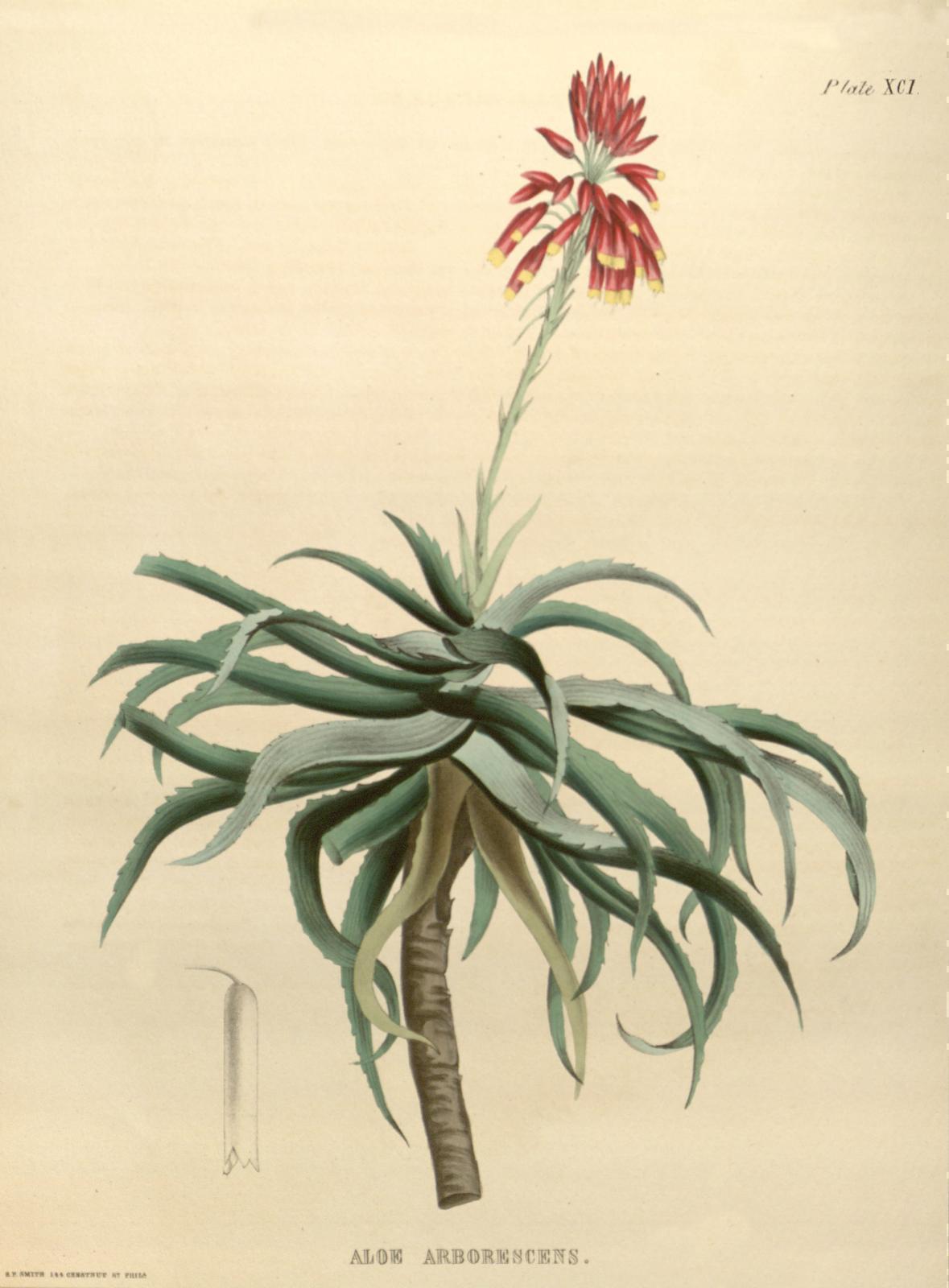Aloe arborescens Mill.
XanthorrhoeaceaeEste aloe, uno de los alrededor de 200 del género, es uno de los de mayor distribución geográfica, estando presente en el medio natural por toda la costa suroriental africana desde Sudáfrica a Malaui, pasando por Mozambique y Zimbabue y desde el nivel del mar hasta las cimas de las montañas.
El nombre Aloe parece derivar del griego άλός (alós), 'sal', debido a su sabor salino, que recuerda el agua del mar. Hay autores que proponen una etimología árabe, alloeh, que sería 'sustancia amarga brillante' o incluso hebrea. El epíteto arborescens alude sin duda a su porte, 'con forma de árbol', pues llega a superar los 4 metros. En inglés se conoce como krantz aloe, que en afrikáans significa 'aloe de acantilado rocoso'. Es frecuente en jardines áridos y rocallas, gracias a su rusticidad y porte, con una llamativa floración invernal de color naranja escarlata. Flores además ricas en néctar que atraen insectos, mariposas y pajáros en una época de habitual escasez. El A. arborescens comparte propiedades medicinales con el popular Aloe vera, y en su lugar de origen es habitual verlo en la entrada de casas y jardines pues se cree que sus espinas ahuyentan a los espíritus malignos.Procedencia
AfricanoCalendario
Hábitat
Morfología
Tipo
 Planta
Planta
 Planta
Planta
Porte
 Mata
Mata
h: 1 a 4m
r: 1,00
 Mata
Mata
Hoja
 Simple
Simple
 Simple
Simple
Lámina
 Lanceolada
Lanceolada
 Lanceolada
Lanceolada
Margen
 Pectinado
Pectinado
 Pectinado
Pectinado
Ápice
 Aristado
Aristado
 Aristado
Aristado
Follaje
 Perenne
Perenne
 Perenne
Perenne

 Powered by
Powered by